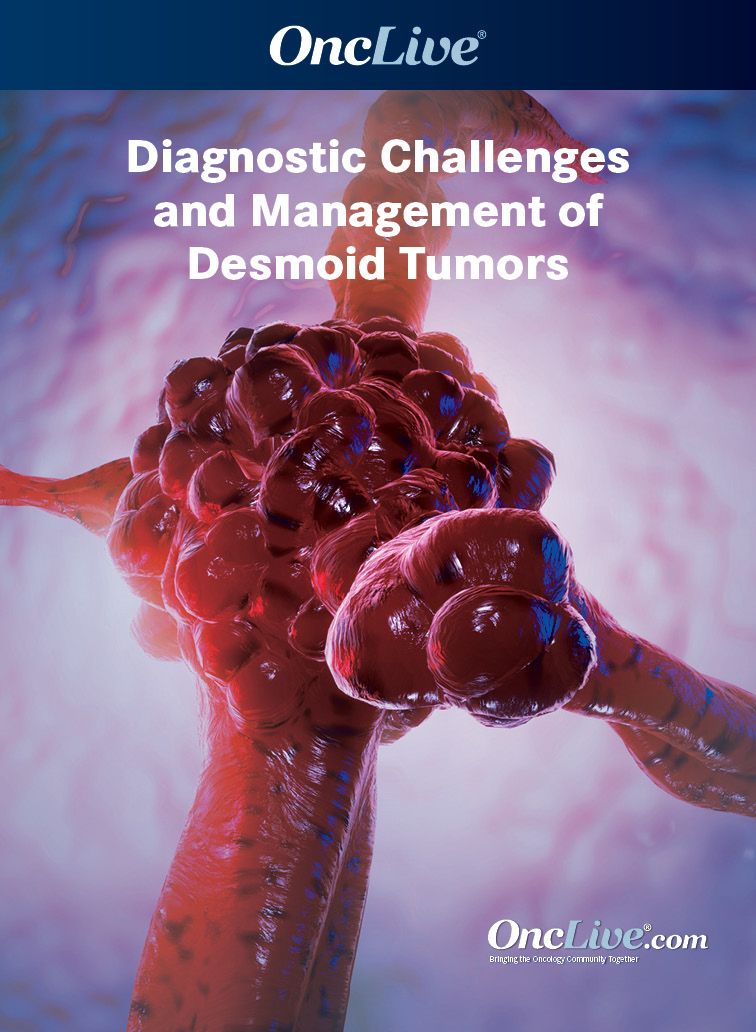Publication
Video
Supplements and Featured Publications
Dr. Ratan on the Steps of Diagnosing Desmoid Tumors
Author(s):
Ravin Ratan, MD, MEd, discusses the steps that should be taken to diagnose desmoid tumors.
Ravin Ratan, MD, MEd, assistant professor, Department of Sarcoma Medical Oncology, Division of Cancer Medicine, The University of Texas MD Anderson Cancer Center, discusses the steps that should be taken to diagnose desmoid tumors.
Desmoid tumors are rare, occuring in approximately 900 to 1,500 people in the United States each year. As a result, the diagnosis is not routinely thought of in the community setting when a patient presents with limb swelling, pain, or stiffness, Ratan explains. Often, patients with these symptoms will have self-limiting conditions that do not require immediate imaging or further workup. As such, it can take months to years for patients to be diagnosed.
Patients may also be diagnosed incidentally after having imaging done for a reason other than to look for a desmoid tumor, Ratan says. Ultimately, given their rarity and vague symptom presentation, clinicians do not have a high degree of suspicion for desmoid tumors when diagnosing a patient. When a patient is diagnosed with a desmoid tumor, it is important that their resected tumor or biopsy be sent to an experienced pathologist, Ratan adds.
The treatment of patients with desmoid tumors has evolved, but standard sequencing strategies are not established for patients, Ratan says. Moreover, no therapies are FDA approved for use specifically in patients with desmoid tumors, underscoring the need for individualized treatment regimens.
Although most desmoid tumors are not lethal, the location and symptom burden associated with the tumor, as well as patient preference, can inform how aggressive therapy should be. For example, extensive surgery with reconstruction would be required for patients with intra-abdominal desmoid tumors. However, as the field has shifted away from surgery, that type of aggressive intervention may not be optimal. Even with the limited use of surgery, patients with small desmoid tumors in the thigh, for example, may be best suited for surgery.
Several systemic therapy options with varying efficacy and toxicity can be used for patients with desmoid tumors. For example, TKIs like sorafenib (Nexavar) and pazopanib (Votrient) are used in most patients who require treatment because of symptoms or progressive disease. In patients with desmoid tumors in dangerous locations or that are highly symptomatic, cytotoxic chemotherapy with doxorubicin and dacarbazine can be considered, Ratan says. Incidentally discovered tumors, on the other hand, may be actively monitored or treated with anti-estrogen agents like tamoxifen, Ratan concludes.
Funding from SpringWorks Therapeutics/Content Developed Independently by OncLive


























%20(2)%201-Recovered-Recovered-Recovered-Recovered-Recovered-Recovered-Recovered-Recovered-Recovered-Recovered-Recovered-Recovered-Recovered-Recovered-Recovered-Recovered-Recovered.jpg?fit=crop&auto=format)
%20(2)%201-Recovered-Recovered-Recovered-Recovered-Recovered-Recovered-Recovered-Recovered-Recovered-Recovered-Recovered-Recovered-Recovered-Recovered-Recovered-Recovered-Recovered.jpg?fit=crop&auto=format)
